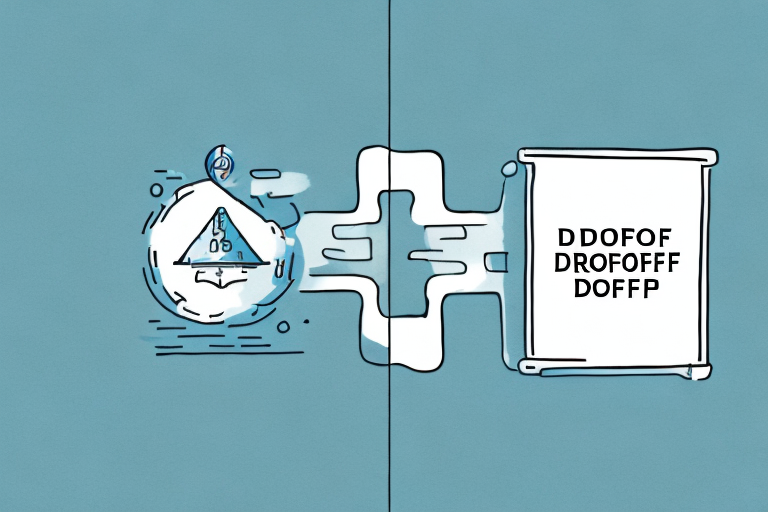How to Drop Off with Ease and Efficiency
As a business owner, one of the most important processes you'll encounter is the drop-off process. From delivering goods to customers to dropping off items to suppliers, ensuring that your drop-offs are efficient and smooth is key to maintaining a successful business. In this article, we'll dive into the importance of drop-off processes, the benefits of efficient drop-offs, and how to streamline your system for maximum effectiveness.
Why Efficient Drop-offs Matter
Efficient drop-offs play a crucial role in ensuring customer satisfaction, which in turn can lead to repeat business and positive recommendations. When customers receive their goods in a timely and professional manner, they feel valued and are more likely to return for future purchases. Additionally, efficient drop-offs can help minimize costs associated with delivery and supply chain management. By ensuring your drop-offs are streamlined, you'll be able to save money and time, allowing you to focus on other areas of your business.
Moreover, efficient drop-offs can also contribute to reducing your carbon footprint. According to the Environmental Protection Agency, optimizing delivery routes and minimizing time spent on the road can significantly decrease fuel consumption and emissions. This not only benefits the environment but also enhances your brand's reputation as a socially responsible business. By prioritizing efficient drop-offs, you can achieve a win-win situation for both your business and the planet.
The Benefits of Smooth Drop-offs for Your Business
Smooth drop-offs can lead to numerous benefits for your business:
- Timely Deliveries: Ensures goods arrive on time and intact, maintaining good relationships with customers and suppliers.
- Cost Efficiency: Reduces costs associated with delays and inefficient practices.
- Enhanced Reputation: Improves customer satisfaction and builds a positive reputation, leading to increased sales and long-term success.
- Safety: Minimizes the risk of accidents and injuries in the workplace by properly managing drop-off procedures.
By implementing smooth drop-off procedures, you can also reduce the likelihood of costly lawsuits and insurance claims, positively impacting your bottom line.
Challenges in Drop-off Processes
While drop-off processes can be highly beneficial, they can also present several challenges:
Logistical Issues
Ensuring that the right items are dropped off at the correct locations can be difficult, especially with multiple drop-off points or locations that are not staffed continuously. Implementing clear labeling, tracking systems, and effective communication channels can help mitigate these issues.
Managing Volume
Handling large volumes of items during peak periods, such as holidays, can strain your drop-off system. Implementing a queuing system or staggering drop-off times can ensure efficient processing without delays.
Human Error
Errors in shipping information or handling can lead to delays and damaged goods. Providing thorough training and establishing standardized procedures can reduce the risk of human error.
Streamlining Your Drop-off System: Tips and Tricks
Enhancing the efficiency of your drop-off system requires a strategic approach. Here are some actionable steps:
Invest in Logistics Management Systems
A robust logistics management system can help track shipments, manage inventory, and monitor delivery times. Tools like SAP Logistics Management offer comprehensive solutions for businesses of all sizes.
Optimize Delivery Routes
Using route optimization software can help plan the most efficient routes for your drivers, reducing travel time and fuel costs. This also minimizes the risk of delays and missed deliveries, enhancing customer satisfaction.
Enhance Communication
Establish clear communication channels between team members and customers. Regular updates on delivery statuses and any potential issues can keep all parties informed and reduce misunderstandings.
Regular System Reviews
Continuously analyze and review your drop-off system to identify areas for improvement. Implementing feedback loops and staying updated with industry best practices can help maintain efficiency.
Team Preparation and Communication for Efficient Drop-offs
Preparing your team effectively is essential for smooth drop-offs:
Comprehensive Training
Provide training on logistics management, effective communication, and the use of necessary tools and technology. Well-trained staff are less likely to make errors and more likely to handle challenges efficiently.
Clear Guidelines and Procedures
Establish standardized procedures for drop-offs to ensure consistency. Clear guidelines help minimize errors and streamline operations.
Contingency Planning
Develop contingency plans for unexpected events such as traffic congestion or road closures. Having backup delivery options or alternative routes can ensure that drop-offs are completed successfully despite unforeseen obstacles.
The Role of Technology in Simplifying Drop-offs
Technology can significantly enhance the efficiency of drop-off processes:
GPS Tracking
Utilizing GPS tracking allows for real-time monitoring of shipments, improving delivery accuracy and enabling quick responses to any issues that arise.
Automated Shipping Systems
Automated systems streamline the delivery process, reducing manual workload and minimizing costs. These systems can handle tasks such as sorting, tracking, and updating delivery statuses automatically.
Mobile Applications
Mobile apps provide real-time updates on delivery statuses, allowing customers to track their packages and receive notifications upon delivery. This enhances customer satisfaction and reduces the number of inquiries and complaints.
Inventory Management
Automated inventory systems ensure that stock levels are maintained accurately, preventing delays in delivery due to stockouts. Tools like Oracle Inventory Management offer robust solutions for tracking and managing inventory.
Overcoming Common Drop-off Obstacles
Businesses often face obstacles in managing drop-off processes. Here’s how to address some common challenges:
Traffic and Weather Delays
Implementing flexible scheduling and having contingency routes can help mitigate delays caused by traffic congestion or adverse weather conditions.
Communication Breakdowns
Ensuring that all parties have access to up-to-date information can prevent misunderstandings. Utilizing centralized communication platforms like Slack can enhance information flow.
Packaging Issues
Proper packaging is essential to prevent damage during transit. Educate your team on effective packaging techniques and invest in high-quality materials. Offering packaging services to customers can also ensure items are well-protected during drop-offs.
Case Studies: Successful Drop-off Strategies from Industry Leaders
Examining successful drop-off strategies from industry leaders can provide valuable insights:
Real-Time Updates
Companies like Amazon provide customers with real-time updates on their deliveries through automated notifications, enhancing transparency and customer satisfaction.
Multiple Drop-off Options
Businesses like UPS offer a variety of drop-off options, including self-service kiosks and automated drop-off units. This flexibility caters to diverse customer preferences and improves overall efficiency.
In conclusion, drop-off processes are a crucial part of any business, and investing time and resources into making them more efficient and effective is key to long-term success. By understanding the challenges associated with drop-offs, streamlining your system, and investing in technology and training, you can create a seamless and professional drop-off process that builds customer satisfaction and enhances your reputation within the industry.




















